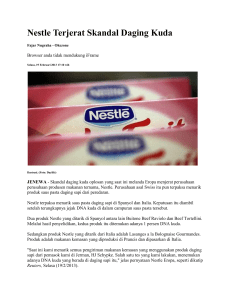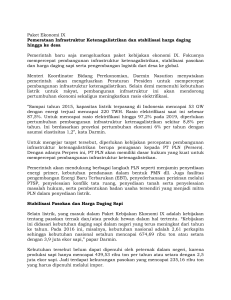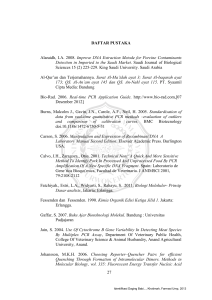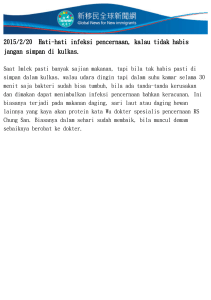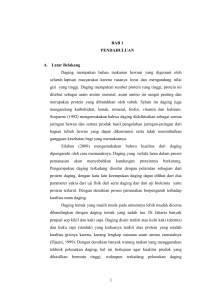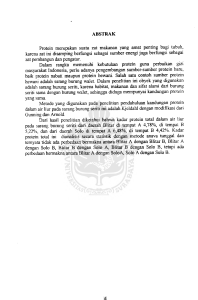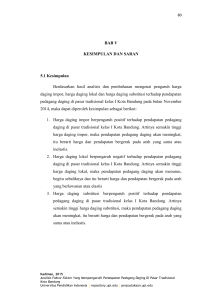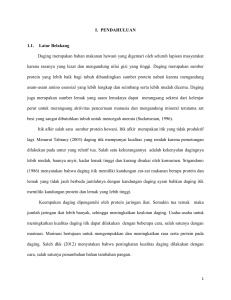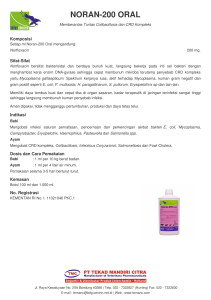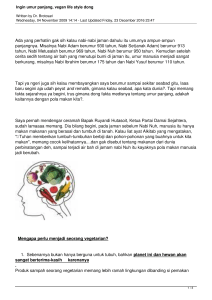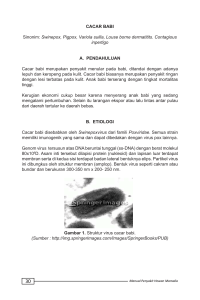analisis protein daging babi tercampur daging sapi secara
advertisement
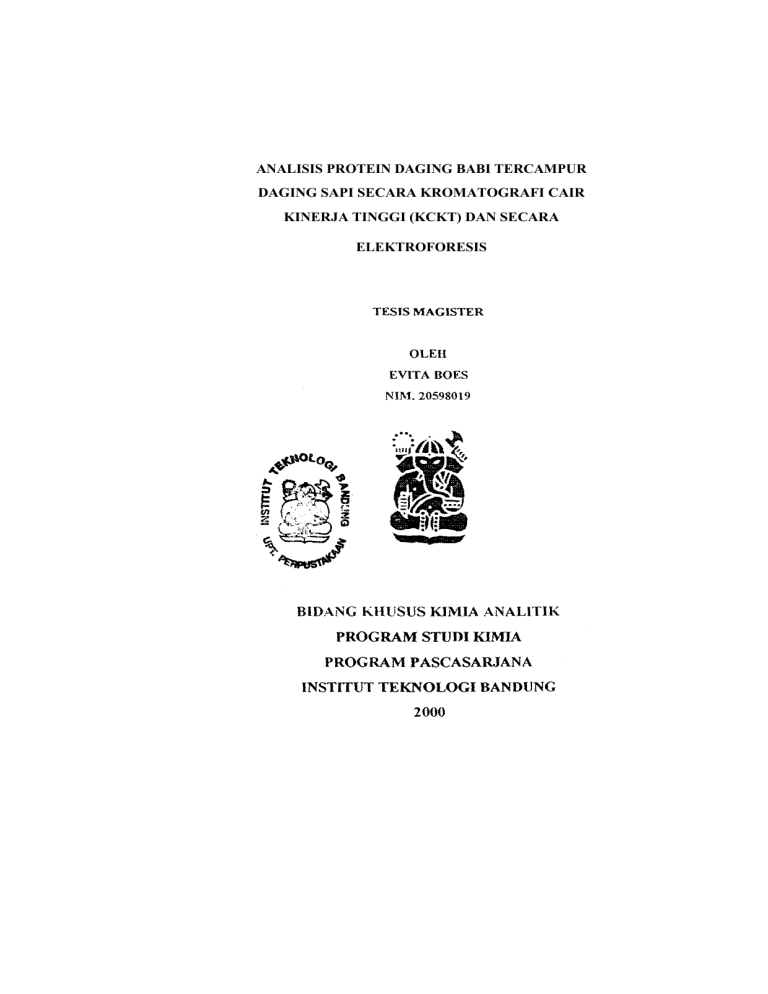
ANALISIS PROTEIN DAGING BABI TERCAMPUR DAGING SAPI SECARA KROMATOGRAFI CAIR KINERJA TINGGI (KCKT) DAN SECARA ELEKTROFORESIS ANALISIS PROTEIN DAGING BABI TERCAMPUR DAGING SAPI SECARA KROMATOGRAFI CAIR K I N E R J A TINGGI (KCKT) D A N SECARA ELEKTROFORESIS Metoda kromatografi cairan kinerja tinggi (KCKT) telah digunakan untuk analisis protein daging babi mentah yang tercampur dengan daging sapi menggunakan fasa diam C4 (Hi-Pore RP-304, Biorad) dengan fasa gerak A 0,1 % asam trifloroasetat dan pelarut B asetonitril/aquabidest/asam trifloroasetat ( 95:5:0,1 ) dan deteksi pada 280 nm. Dan analisis kualitatif, komponen khas yang hanya dimiliki oleh babi mempunyai retensi relatif 1, 74 – 1,77. Untuk perhitungan kuantitatif dibuat kurva standar, hubungan antara luas komponen khas babi dan jumlah daging babi yang ditambahkan ke dalam daging sapi. Dari kurva diperoleh garis lurus dengan koefisien korelasi 0,9823 untuk sampel daging babi dan 0,9852 untuk sampel daging sapi. Metoda KCKT yang dikembangkan dapat menganalisis babi yang tercampur sapi hingga 1 %, akan tetapi perhitungan kuantitatif lebih akurat pada jumlah babi diatas 5 % dengan koefisien korelasi di bawah 3 %. Karena metoda KCKT hanya dapat menganalisis protein dari daging yang segar, maka protein dari daging yang sudah matang dapat dianalisis melalui uji DNA yang sudah diamplifikasi oleh PCR dengan teknik elektroforesis. Hasil amplifikasi DNA babi, serta campuran babi dan sapi menunjukkan adanya satu pita yang mempunyai ukuran sekitar 2 kb, sedangkan DNA sapi yang sudah diamplifikasi tidak menunjukkan pita yang jelas pada agarose gel. Protein analysis of raw pork combined with beef meat has been carried out by High Performance Liquid Chromatography (HPLC) using C4 stationary phase ( Hi-Pore RP-304, Biorad), A 0,1 % trifluoracetic acid and B a mixture of acetonitrile/water/trifluoracetic acid (95: 5:0,1) as mobile phase, detection at 280 nm. Qualitative analysis indicated than the relative retention time of the specific component from pork was between 1.74-1.77. Quantitative analysis was calculated from standard curve obtained due to correlation between specific pork component area and amount of pork meat added into the beef. A straight line was obtained with correlation coefficient 0.9823 for pork and 0,9852 for beef sample. The improvement of HPLC method was able to analyze the pork content in the mixture until 1 %, nevertheless the quantitative calculation was more accurate at the pork content around 5 % with coefficient of variation below 3 %. Since the HPLC method could only analyze protein from raw meat, the protein of cooked meat was analyzed by amplification of DNA with PCR, followed by electrophoresis technique. Result of pork as well as mixture of pork and beef DNA amplification indicated the presence of one band with a size about 2 kb, mean while amplification of beef DNA did not show a clear band on the agarose gel.
